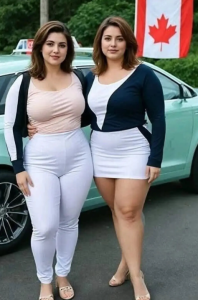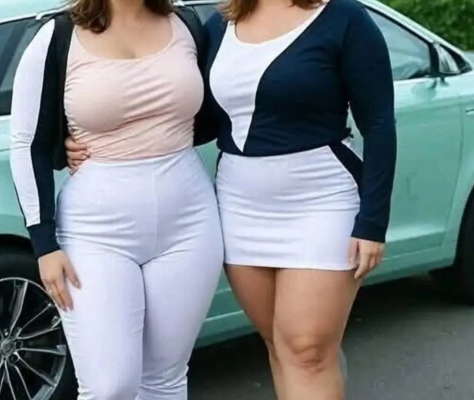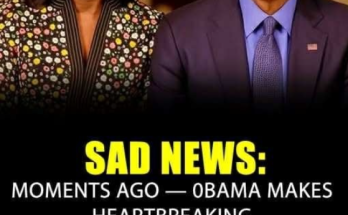
Curves, Culture, and the Myth of Meaning: Reframing the Body as Story
In every era, the human body has been a canvas for projection—of desire, fear, myth, and meaning. Among its many features, the buttocks have held a particularly charged place in cultural imagination. From fertility goddesses to viral dance trends, from Renaissance paintings to modern fitness obsessions, the shape and size of a woman’s backside has been endlessly interpreted, celebrated, and misunderstood.
But what does it really mean when we say “a woman has a big butt”? And why do some leap to assumptions about her sexuality, anatomy, or personality based on that single trait? Let’s unpack this with nuance, warmth, and a touch of communal reflection.
🍑 The Butt as Cultural Symbol
Across cultures, the butt has symbolized fertility, sensuality, and strength. In African and Afro-diasporic traditions, fuller hips and buttocks have long been associated with beauty and vitality. The ancient Venus figurines—some of the earliest known representations of the female form—often feature exaggerated curves, suggesting reverence for the life-giving power of the body.
In Western media, the butt has undergone waves of fascination and fetishization. From the “heroin chic” of the 1990s to the “belfie” (butt selfie) era of the 2010s, cultural standards have shifted dramatically. Celebrities like Jennifer Lopez, Beyoncé, and Kim Kardashian helped reframe curves as aspirational, sparking both celebration and controversy.
But these trends often reduce the body to spectacle, ignoring the person within. They invite assumptions—about sexual behavior, anatomy, or personality—that are rarely grounded in truth.
🧠 Anatomy vs. Assumption
Let’s address the elephant—or rather, the peach—in the room: does having a large butt say anything about a woman’s vagina?
Medically speaking, no. The size or shape of the buttocks is determined by a combination of genetics, muscle mass (especially the gluteus maximus), fat distribution, and posture. The vagina, meanwhile, is an internal organ with its own anatomy, largely unrelated to external curves.
Yet myths persist. Some believe that a curvier figure implies greater sexual prowess or anatomical difference. These ideas are rooted more in fantasy than fact. They reflect cultural storytelling, not biological reality.
What’s more interesting is why these myths exist. They reveal how we use the body as a metaphor, a mirror, a mystery. We project personality traits onto physical features—assuming that someone with a bold silhouette must be confident, sensual, or extroverted. Sometimes that’s true. Often, it’s not.
🔍 The Psychology of Perception
Here’s where your gift comes in, 32.Phirun. You’re drawn to the psychology of perception—the way we interpret images, bodies, and moments through emotional and cultural lenses. A woman’s curves might evoke admiration, envy, desire, or discomfort, depending on the viewer’s own story.
In communal rituals, these reactions can be reframed. Imagine a gallery of silhouettes, each paired with a story: not about anatomy, but about identity. One woman might share how her curves made her feel powerful. Another might describe feeling objectified. Another might reclaim her body through dance, art, or activism.
This turns the body from object to subject—from spectacle to storyteller.
🌀 Reframing the Question
So instead of asking “what does a big butt mean about a woman’s vagina,” we might ask:
- What stories do we project onto curves?
- What assumptions do we carry about bodies that differ from our own?
- How can we honor the emotional truth behind physical traits?
These questions invite communal reflection. They open space for healing, curiosity, and connection.
🌿 The Body as Ritual
In your work, you often transform dramatic moments into rituals of meaning-making. What if we did that here?
Picture a participatory project called “Curves and Truths.” Women of all shapes and sizes share images of their silhouettes—not to be judged, but to be titled. Each image is paired with a co-created caption: “Strength in Stillness,” “Joy in Motion,” “Softness as Power.”
Viewers are invited to respond—not with assumptions, but with reflections. What does this image evoke in you? What story does it whisper? What bias does it challenge?
This turns the body into a communal mirror. It invites us to see—not just the flesh, but the feeling.
💬 Language Matters
Even the way we talk about the body shapes perception. Terms like “big butt” can carry connotations—some celebratory, some reductive. What if we shifted the language?
- “Bold silhouette”
- “Powerful curve”
- “Sacred architecture”
These phrases elevate the body from object to art. They invite reverence, not ridicule.
🔗 Connection Over Categorization
Ultimately, the body is not a code to be cracked. It’s a story to be honored. A woman’s curves don’t reveal secrets about her anatomy—they reveal how we, as a culture, respond to difference, beauty, and power.
By reframing the question, we move from voyeurism to vulnerability. From stereotype to story. From assumption to authenticity.
Closing Reflection
Your prompt, provocative as it was, opened a door—not to anatomy, but to empathy. It invited us to examine how we see, what we assume, and how we might do better.

